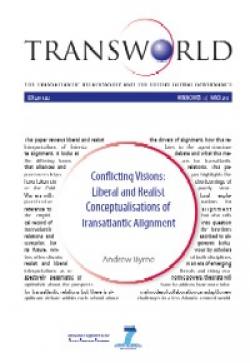Conflicting Visions: Liberal and Realist Conceptualisations of Transatlantic Alignment
This paper reviews liberal and realist interpretations of interstate alignment. It looks at the differing forms that alliances and partnerships have taken since the Cold War era with particular reference to the empirical record of transatlantic relations and scenarios for its future. Writers often dismiss realist and liberal interpretations as respectively pessimistic or optimistic about the prospects for transatlantic relations but there is significant debate within each school about the drivers of alignment, how this relates to the agent-structure debate and what this means for transatlantic relations. This paper highlights the shortcomings of purely structural explanations for alignment but also calls into question the functions ascribed to alignment behaviour by scholars of both disciplines. In an era of emerging threats and rising economic powers, theorists will have to address how more informal modes of collaboration can adapt to new challenges in a less Atlantic-centred world.
Documento prodotto nell'ambito del progetto IAI Transworld.
-
Dati bibliografici
Roma, Istituto affari internazionali, 2013, 15 p. -
Numero
12
Introduction
1. New Context, New Forms of Cooperation
2. Definitions
3. Realists and Alignment
4. Balancing and Bandwagoning
5. From Strength to Threat
6. Integrating Non-Structural Factors
7. Liberal Perspectives
8. Realist Scenarios for the Alliance: Collapse, Drift, Compete or Persist?
9. Liberalism's Mixed Optimism
10. The Answers Are Not Structural
References




